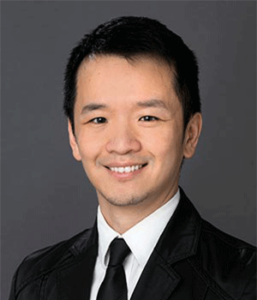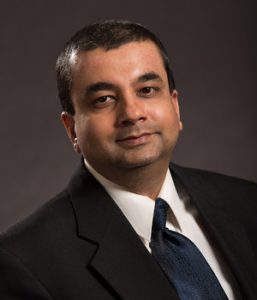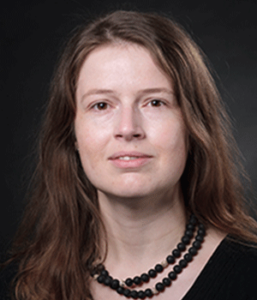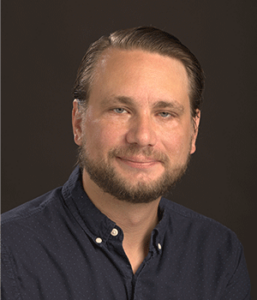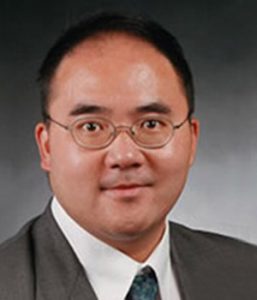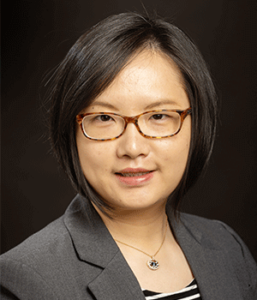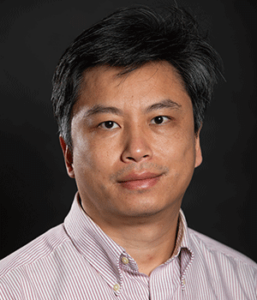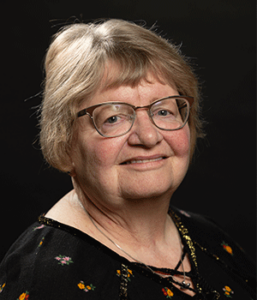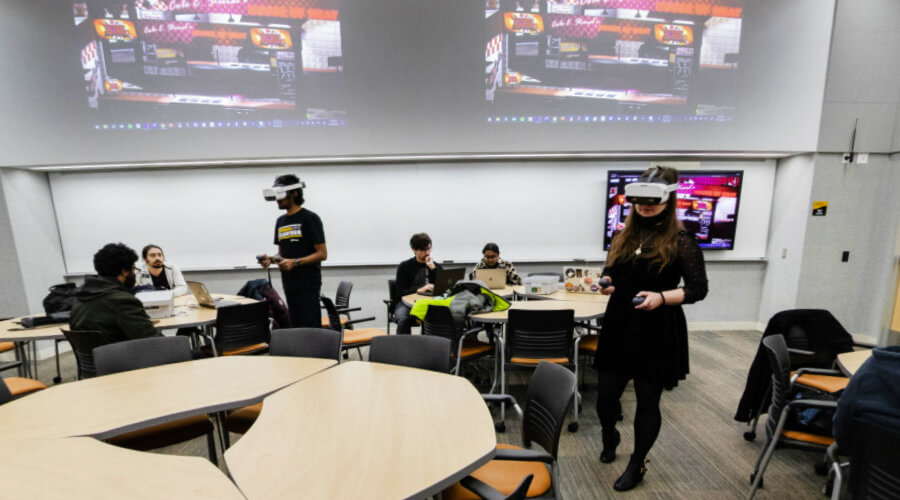Computer Science MS (Professional Track) MS
With incredible demand for advanced computing skills across virtually every industry, now is an exciting time to earn a computer science master’s degree, whether you are seeking advancement, higher pay or new opportunities. UWM is one of Wisconsin’s two R1 research universities—an ideal place to bolster your computer science knowledge and skills.
The program welcomes those whose undergraduate degrees were not in computer science.
Our professional track is designed for working professionals in computer science and other fields. This track is available in person, online, and through a combination of the two.
Ranked #11 in Most Affordable Online Computer Programming degrees in 2022 by Intelligent.com
Program Type
Master’s
Program Format
On Campus, Online
Boost Your Career
A master’s degree in computer science will broaden your knowledge and open the doors to senior positions and career changes. Those holding master’s degree are in high demand and the pay is excellent.
Sample positions, median salaries and projected growth from 2019-2029:*
- Information security analyst. Salary: $103,590. Growth: 31%
- Software developers, quality assurance analysts, testers. Salary: $110,140. Growth: 22% Computer and information research scientist. Salary: $126,830. Growth: 15%
- Computer and information systems manager. Salary: $151,150. Growth: 10%
- Computer systems analyst. $93,730. Growth: 7%
*U.S. Bureau of Labor Statistics
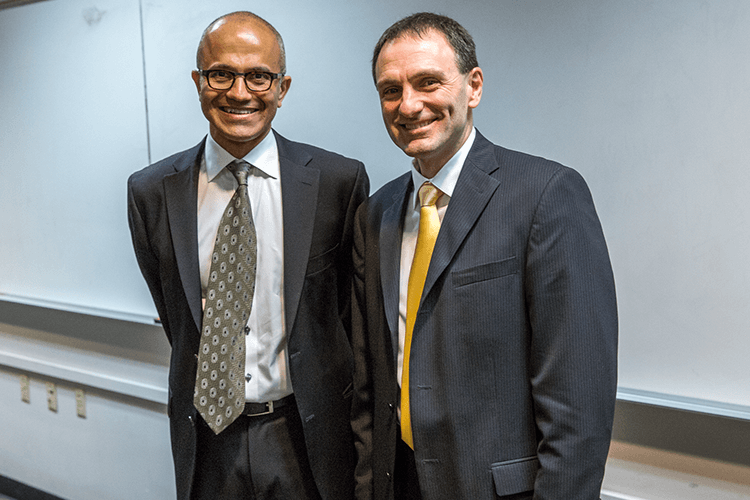
What to Expect
This program provides a broad background in critical and emerging aspects of computer science. You can select to concentrate in one of these six areas:
- Artificial intelligence, machine learning, and natural language processing
- Database and information systems
- Image Processing and computer graphics
- Medical and bio informatics
- Programming language and compilers
- Theory and algorithms
Online, in-person, or blended
This track is ideal for working professionals. Each semester, you elect how to complete your studies: online, in-person, or a blend.
For admission you need only meet UWM Graduate School requirements and have knowledge of computer programming equivalent to our introductory or intermediate undergraduate CS coursework.
You can complete your 31-credit degree in as few as 24 months. No thesis is required.
UWM is known nationally as a leader in online education. The online computer science courses are identical to in-person courses and are taught by the same top-tier faculty.
Tuition:
For fully-online students, the cost for out-of-state students is identical to the rate for in-state students.* The 2023-2024 academic year fee for one 3-credit Computer Science course is $2,799 ($933/credit) and for Computer Studies it is $2,499 ($833/credit). To get this rate, you must sign up for section 210 or 211 of an online course, where the price is shown in the Class Notes.
*In-state students can get an even lower rate; see this page for details.
Deadlines:
- Beginning in 2023, new cohorts of students begin in the fall semester only.
- Deadline to Enroll: March 15
Curriculum:
In addition to CompSci courses, the following are non-CompSci pre-approved courses eligible for Professional Track CS MS (as of 5/3/2019).
Up to 9 credits from the following list may be used for your program of study for the Professional Track:
- All CEAS courses with graduate credit with the exception of COMPST 701 and COMPST 702.
- All INFOST and MATH courses with graduate credit.
- The following HCA courses:
- HCA 541 Healthcare Information Systems Analysis & Design
- The following HI courses (formerly HCA):
- HI 700 Introduction to HealthCare Informatics
- HI 722 Legal, Ethical and Social Issues in Health Care Informatics
- HI 723 Health Care Systems Applications: Administrative & Clinical
- HI 740 Introduction to Biomedical Database Applications
- HI 742 Computational Intelligence in Health Informatics
- HI 743 Predictive Analytics in Healthcare
- HI 744 Text Retrieval and Its Applications in Biomedicine
- HI 745 Health Big Data Processing Platforms
- HI 760 Biomedical Terminology and Ontology
- HI 776 Biomedical Natural Language Processing
- HI 789 Biomedical Information Extraction
- BUS ADM 544, BUS ADM 546 and any BUS ADM or BUS MGMT course 700 or higher except the following: BUS ADM 701, 740, 741, 743, 810, 813, 817 or any Seminar, Internship, Research Reading, Study Abroad, or Capstone Project/Thesis course.
- Sociology 928: Seminar in Social Organization: Data & Society
Other courses may be added as requested by students and approved by the faculty.
You may switch to the regular track after completing at least nine credits of 700-level CompSci courses or CompSt751, with at least a 3.5 cumulative GPA. Not all courses acceptable under the professional track may be acceptable under the regular track.
International Students
If you are on a student visa in our masters program, you are normally eligible for “Curricular Practical Training” after two full semesters (Fall and Spring). You can apply for an internship at a US company (100% time during summer or 50% during a later semester) and concurrently take 1 credit toward your graduate program under the supervision of a professor.
More Information
Contact the College of Engineering & Applied Science Graduate Programs Office or the Computer Science Graduate Program Representative.
Faculty
- Professor, Computer Science
- boyland@uwm.edu
- 414-229-6986
- Engineering & Mathematical Sciences E364
- Associate Professor, Computer Science
- ccheng@uwm.edu
- 414-229-5170
- Engineering & Mathematical Sciences 1261
- Professor, History - General
- Affiliate Professor, Computer Science
- thaigh@uwm.edu
- 414-229-6840
- Holton Hall 349
- Associate Professor, Computer Science
- katerj@uwm.edu
- 414-229-4264
- Engineering & Mathematical Sciences E333
- Associate Professor, Electrical Engineering
- Associate Professor, Computer Science
- lawc@uwm.edu
- 414-229-6203
- Engineering and Mathematical Sciences 1219
- Associate Professor, Health Informatics & Administration
- Affiliate Professor, Computer Science
- Graduate Program Director, Health Care Informatics
- jakeluo@uwm.edu
- 414-229-7333
- Northwest Quadrant B 6469
- Associate Professor, Computer Science
- mali@uwm.edu
- 414-229-6762
- Engineering and Mathematical Sciences 1245
- Professor, Computer Science
- Department Chair, Computer Science
- mcroy@uwm.edu
- 414-229-6695
- Engineering and Mathematical Sciences 1275
- Teaching Faculty II, Computer Science
- nowrin@uwm.edu
- 414-251-5224
- Engineering & Mathematical Sciences 817
- Associate Professor, Information Studies Administration
- Affiliate Professor, Computer Science
- ponelis@uwm.edu
- 414-229-2514
- Northwest Quadrant B 3488
- Richard and Joanne Grigg Associate Professor, Mechanical Engineering
- Chair, Mechanical Engineering Graduate Program Committee
- Affiliate Professor, Computer Science and Biomedical Engineering
- Switzer Research Distinguished Fellow
- rahmanmh@uwm.edu
- 414-251-8406
- University Services & Research Building (USRB) 201D
- Teaching Faculty 3, Computer Science
- rds@uwm.edu
- 414-229-2796
- Engineering and Mathematical Sciences E386F
- Assistant Professor, Computer Science
- jeraldlt@uwm.edu
- Engineering & Mathematical Sciences 990D
- Associate Professor, Electrical Engineering
- Associate Professor, Computer Science
- wwang@uwm.edu
- 414-229-2247
- Engineering & Mathematical Sciences 1285
- Assistant Visiting Professor, Computer Science
- yavaryme@uwm.edu
- 402-525-3175
- Engineering & Mathematical Sciences
- Professor, Computer Science
- Professor, Biomedical Engineering
- Director, Big Data Analytics and Visualization Lab
- yuz@uwm.edu
- 414-229-2960
- Engineering & Mathematical Sciences 327
- Assistant Professor, Computer Science
- zhenzeng@uwm.edu
- 414-251-7986
- Engineering & Mathematical Sciences 1225
- Professor, Electrical Engineering
- Professor, Computer Science
- junzhang@uwm.edu
- 414-229-4246
- Engineering & Mathematical Sciences 1207
- Associate Professor, Computer Science
- tzhao@uwm.edu
- 414-229-5682
- Engineering & Mathematical Sciences 1145
Advising
- Advisor, Graduate Programs
- Computer Science, Electrical Engineering, Biomedical Health Informatics
- crary@uwm.edu
- 414-229-7267
- Engineering & Mathematical Sciences E379
- Advisor, Graduate Programs
- Civil/Environmental Engineering, Mechanical Engineering, Biomedical Engineering, Industrial/Manufacturing Engineering, Materials Science & Engineering
- rpackard@uwm.edu
- 414-251-8543
- Engineering & Mathematical Sciences E379
Guidelines for Professional Work in Lieu of a Capstone
The student should prepare both a written report and an oral presentation. Both components should address the following concerns (as described by the rubric form completed by faculty when assessing Capstone projects).
- The report and presentation should demonstrate understanding of the broad problem being addressed, as it pertains to the “real world.” It should specify: the target user, the type of task that it supports, the reason the user needs to perform this task, the main limitations to the approach currently used in practice, and what problems those limitations might cause. They should also describe the significance of the work, such as how important this task is to the target business and how large or critical this business is to society or to the economy. If there are other systems that exist that solve the same problem, mention a few of them and why the company chose not to use them if they were available at the time. (If you do not know why it is okay to mention them but indicate that the reasons for pursuing a new solution were not shared with you by the company.)
- The report and presentation should demonstrate understanding of the solution at a technical level, including links to access any code that was written or, if cloud/commercial software or services were used, the report should include pseudocode for key algorithms. Also, for any tools that were used, the report should assess the relevant capabilities and limitations of each of the tools that you combined in the workflow. An overview, including an architecture diagram, should also be included in the presentation.
- The report and presentation should include a description of the methods for systematic testing or validation and the findings of the testing, providing quantitative metrics to the extent possible. For qualitative measures, you might survey a sample of the actual users of the system; for example, you could ask:
- to what extent they feel the solution addressed the target problem,
- what they consider to be the primary strengths of the solution,
- what they consider to be the primary limitations of the solution and whether they think it would be worthwhile to address those limitations in the near term.






